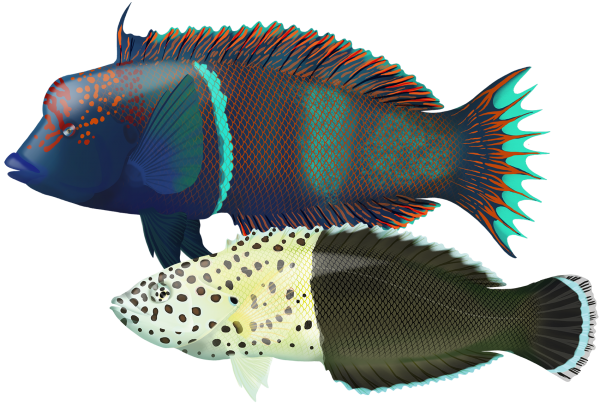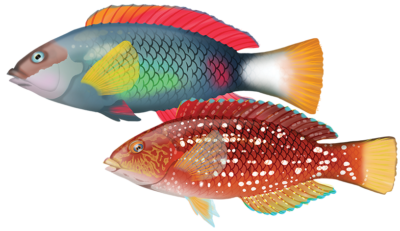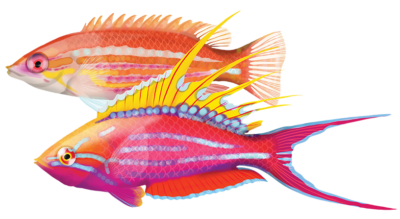Quick Facts
Distribution

Interesting Info
- The Redblotched Wrasse is widely distributed across Australia, predominantly inhabiting the warmer waters of Western Australia, the Northern Territory, and Queensland’s Great Barrier Reef. It also extends to northern parts of New South Wales.
- These fish are quite distinctive in appearance. They have an elongated body with a pointed snout. Adults have bright red-orange blotches on a blue-grey body, while juveniles often have a more yellow-orange colour with blue spots.
- Redblotched wrasses have a varied diet. They eat small invertebrates, crustaceans, molluscs, and other small creatures they find in their coral reef habitats.
- At night, the Redblotched wrasse undergoes a colour transformation. They take on a duller colour to camouflage with their surroundings while they rest, protecting them from nocturnal predators.
- They prefer to live among coral reefs, rocky outcrops, or sandy bottoms near vegetation, where they have numerous places to hide from predators and hunt for food.
- During the spawning season, mature Redblotched wrasses undertake short-distance migrations to specific spawning sites. Here, they participate in mating displays and spawning events, before returning to their home territories.
- Redblotched wrasses spawn in groups or pairs during specific seasons. The eggs and larvae are planktonic, drifting in the ocean’s currents until they mature into juveniles, at which point they settle on the reef.
- Like many wrasses, they are protogynous hermaphrodites, meaning they start life as females and transform into males as they mature. This change usually occurs when the dominant male of a group dies, with the largest female of the group typically changing sex to replace him.
- Estimated lifespan is between 10 – 12 years.
Species Interaction
Recreational Fishing, Aquarium, Snorkeling & Diving
The Redblotched Wrasse can be a fascinating species to observe for snorkelers and divers. They are active swimmers and are often seen darting around coral reefs and rocky areas, searching for food. Their bright bright red-orange blotches on their blue-grey body make them easy to spot underwater. They are often caught as bycatch with anglers and normally released. They can be a good addition to larger established aquariums but do grow to a larger size so need space.
Scientific Classification
Kingdom: Animalia
Phylum: Chordata
Class: Actinopterygii
Order: Perciformes
Family: Labridae
Genus: Coris
Species: Coris Aygula
Conservation Status
According to the IUCN Red List, the redblotched wrasse is currently listed as ‘Least Concern’ in Australia. This means that while they aren’t endangered, it’s essential to monitor populations to ensure their continued health and survival.
Fish Taste Quality
Redblotched wrasse are an edible fish but typically released as they are considered bycatch. They have firm, white flesh that is said to be mild in taste.
Taste Rating: 2/5
How to catch
Redblotched Wrasse
Catch Difficulty: Easy
Tackle: Running Sinker Rig
Bait: Crab, Fresh cut flesh baits, Pilchards, Prawns, Squid, Worms, Yabbies, Soft plastics
Technique: Keep bait close to the reef/structure
Popularity: Not targeted - Bycatch
Redblotched Wrasse
As Aquarium Fish
Care Level: Moderate to difficult
Temperament: Peaceful
Diet: Omnivore
Reef Compatible: Yes
Minimum Tank Size: 250+ gallons
Recreational Viewing
- Snorkeling & Scuba
Finding: Easy
Temperament: Peaceful
Location: Inner Reef, Outer Reef, Lagoon
Danger: None





